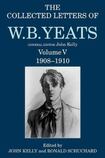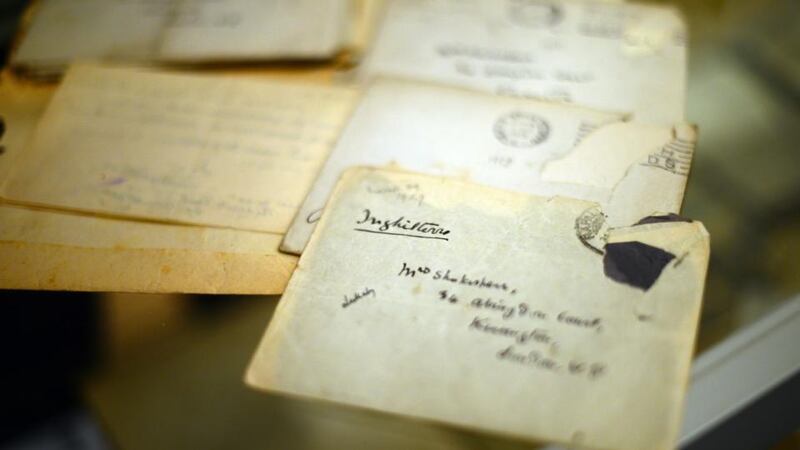
The three years covered in enthralling detail in this latest volume of the collected letters of WB Yeats are the years of his greatest involvement in the day-to-day running of the Abbey Theatre. There is little sign of the poetry until near the end. One of the few poems Yeats manages to write during this period complains that his life is taken up by “theatre business, management of men”, and this volume puts extraordinary detail and colour on the theatre business.
The extraordinary acting duo of sisters Sarah and Molly Allgood claim the attention, with both vying for the various Deirdres, and new playwrights are found in Lennox Robinson, TC Murray and St John Ervine.
But many of Yeats’s closest friends are quick to say that his true vocation remains as a poet rather than a theatre manager. Thus Maud Gonne: “It may be that all the worry and very exterior work you have had to do in the theatre has hindered your [poetry] – but I am quite sure you will get back to it all again.”
What prevents Yeats from doing so is a combination of deaths and departures. January 1908 is marked by a tumultuous event: the departure of WG and Frank Fay from the theatre they helped to found. The issue had become one of authority. When Willie Fay insists that the company actors sign a contract directly with him and act solely under his direction, Yeats, Lady Gregory and JM Synge voice a unanimous “no” and the Fays resign. The net effect is that Yeats and Synge take over the running of the theatre.
But at the end of April, Synge is back in hospital for a procedure which reveals an inoperable tumour. Incredibly, he is not told of this though his family and Yeats are. Synge never fully returned to the Abbey after this and dies in March 1909 at the age of 37.
Yeats wrote that with this tragic event death became “a reality” to him for the first time. In the same month, Lady Gregory comes very near to death with a serious illness. The most evident sign of the emotional strain on Yeats is how the usual implacable formality with which he signs all of his letters, “yours ever, WB Yeats” – even to his family– gives way in the case of Lady Gregory. Letters to her in March 1909 are signed “yours with love” and “yours affectionately”.
He writes eloquently of how much Gregory means to him in terms of the various crucial roles she performs in his life: “I am utterly dazed to think that you are ill. You have been more to me than father or mother or friend, a second self. The only person in the world to whom I could tell every thought.”

Another major strand is letters to and from the remarkable Yeats family. The most important letters for Yeats are the ones to his father, John Butler Yeats, who had upped anchor in December 1907 and sailed to New York. As the months and years go by, it becomes clear that the old painter isn’t coming back, even though he keeps up the fiction by inisting his family pay the annual rent on his Dublin studio.
In debate with his father, Yeats develops his storytelling abilities. One letter is a comic tour-de-force about the grand-dame English actor Mrs Patrick Campbell, for whom he is writing the role of Deirdre. Yeats’s efforts to go over his script with Mrs Campbell are interrupted throughout the day by visits from a musician, a dressmaker, a deaf man and relatives, as well as by frequent interventions from her pet parrot. Finally, it is past midnight and Yeats protests that he must go home. Mrs Campbell is having none of it: “‘No, I must hear the end of a play the same day as I hear the beginning.’” JBY applauds his son’s letter as “magnificent – full of satirical narrative”.
There are letters to his two sisters, Susan and Elizabeth (affectionately known as “Lily” and “Lolly”), mainly in relation to their Cuala Press, which gets first publication of his poems and plays. But near the end of this volume his sister Susan writes him about the death of their uncle George, and the family gathers in Sligo for the funeral. Yeats writes delightedly to several correspondents that at 5am on the day of George’s’s death the Banshee was heard to howl for, as he adds confidentially, “the Banshee follows my mother’s people”.
Reading these letters is like reading an intimate chapter in the history of Ireland
Finally, Yeats and Lady Gregory light upon the 22-year-old Cork playwright Lennox Robinson and appoint him manager. Failing to close the theatre on the death of King Edward VII, reported on May 7th, 1910 , the hapless Robinson drew the wrath of Annie Horniman upon him. Yeats has had to do much in the course of this volume to pacify the incendiary Englishwoman, who has bought the theatre for them and pays the bills. But Horniman is opposed to anything political which seems to translate as determinedly anti-Irish. Relations between them all have become inreasingly strained, and the failure to close the theatre is, for her, the final straw.
Yeats and Gregory loyally support their new manager and are offended by Miss Horniman’s failure to await either of their responses before firing off salvoes to the newspapers.
With the new manager in place, Yeats returns to the writing of poetry. His new poems frequently take the form of dialogue and engage more with contemporary events than did those of the celtic twilight. Many of them centre on Maud Gonne, who, whatever political differences emerge between them in his writing of the long essay JM Synge and the Ireland of His Time, is unequivocal in her praise of his poetry: "I liked the poems so much, even more than when I first heard them [...] There is a danger of my growing very vain when I think of these beautiful things created for me – thank you."
Reading these letters is like reading an intimate chapter in the history of Ireland. Yeats had a wider range of interests and acquaintance than most poets and correspondingly the scope is vast. The extraordinary research revealed in the footnotes by the book’s editors, John Kelly and Ronald Schuchard, transforms the volume into a vivid and witty epistolary novel of historic sweep and passionate engagement.
I have only one criticism and one request of the editors and publishers. Volume four of these letters appeared 13 years ago. When the first few volumes appeared, in the 1980s and 1990s, the poet’s daughter, Anne Yeats, remarked to me that she’d be dead before they all appeared. I replied: “Miss Yeats, we’ll all be dead before they appear.” Could I lodge an urgent plea for annual publication of the remaining 13 volumes? That way, we’d be guaranteed a rich reading experience as we all fall over.











